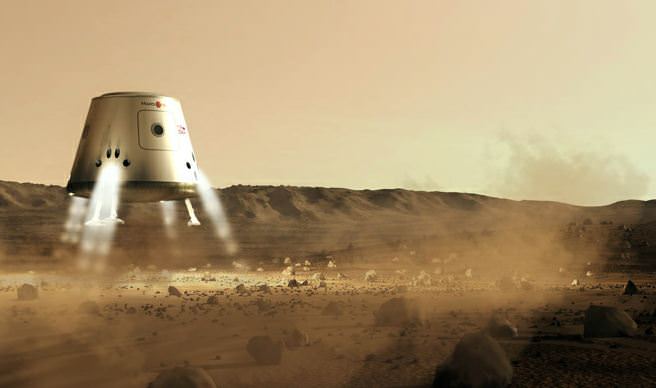Reality TV goes to Mars! Dutch entrepreneur Bas Lansdorp is leading a group visionaries and businesspeople who want to send four humans to Mars by 2023, and they say they can achieve their goal at an estimated cost of $6 billion USD. How can they do it? By building it into a global media spectacle. And oh, by the way, this will be a one-way trip.
"Who would be able to look away from an adventure such as this one?" asks Lansdorp in his bio on the
Mars One
website. "Who wouldn't be compelled to watch, talk about, get involved in the biggest undertaking mankind has ever made? The entire world will be able to follow this giant leap from the start; from the very first astronaut selections to the established, independent village years later. The media focus that comes with the public's attention opens pathways to sponsors and investors."
As far as the one-way mission (
a concept that Universe Today has written about extensively
) the Mars One website notes, "this is no way excludes the possibility of a return flight at some point in the future."
[/caption]
The difference between this mission and the one proposed by
Jim McLane back in 2008
is that McLane wanted to send just one person to Mars.
However, the Mars One group says that once the first trip is successful and Mars becomes developed, it will be "much easier to build the returning rocket there."
In a
Q&A on reddit
, Lansdorp said the biggest challenge will be financing.
"We have estimated, and discussed with our suppliers that it will cost about 6 billion US$ to get the first crew of four people to Mars. We plan to organize the biggest media event ever around our mission. When we launch people to Mars and when they land, the whole world will watch. After that a lot of people will be very interested to see how 'our people on Mars' are doing."
But the big challenge is that the biggest expenditures will be building the equipment before they send people to Mars. "This is why we are building a very strong technical case now. If we can convince sponsors and investors that this will really happen, then we believe that we can convince them to help us finance it," Lansdorp said.
As far as technologies, Mars One expects to use a SpaceX Falcon 9 Heavy as a launch vehicle, a transit vehicle/space habitat built by Thales Alenia Space, a variant on the SpaceX Dragon as the lander, an inflatable habitat built by ILC Dover, a rover vehicle by MDA Space Missions, and Mars spacesuits made by Paragon.
The project website says "no new technologies" will be needed, but does any space agency or company really have a good handle on providing providing ample air, oxygen, energy, food and water for extended (lifetimes?) periods of time? Instead, the website provides more details on FAQ's like, What will the astronauts do on Mars? Why should we go to Mars? Is it safe to live on Mars? How does the Mars base communicate with Earth? And the Mars One team emphasizes that this can be done with current technology. However,
no one really knows how to land large payloads on Mars
yet, so at least some development will be required there.
Who will go? Later this year they will begin to take applications and eventually 40 people will take part in a rigid, decade-long training program (which sounds very expensive) where the 'contestants" will essentially be voted off the island to get to the final four astronauts. The selection and training process will be broadcast via television and online to public, with viewers voting on the final selected four.
It's an intriguing proposition, but one filled with technological hurdles. I've just finished reading
Ben Bova's "Mars,"
so I'm also thinking the Mars One folks will need to be on the lookout for micrometeorite swarms.
Mars One website.
 Universe Today
Universe Today
